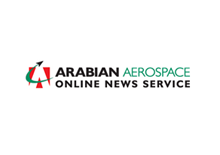Aircraft Fairings Market Report 2019: Worldwide Growth, Trends & Forecasts 2020-2025 - ResearchAndMarkets.com
The "Aircraft Fairings Market - Growth, Trends and Forecast (2020 - 2025)" report has been added to ResearchAndMarkets.com's offering.
The aircraft fairings market is projected to grow with a CAGR of over 3% during the forecast period.
- The increasing demand for newer generation aircraft is making the aircraft OEMs to increase their aircraft production rates, thereby putting pressure on the aircraft fairing suppliers to increase their production as well.
- In the efforts to produce lightweight fairings, several manufacturers are using different composite materials in the manufacturing of various fairings of the aircraft, which is now a major trend in the market.
Key Market Trends
Commercial Segment is Expected To Dominate the Market in The Years to Come
The market is expected to be dominated by the commercial segment, whose revenues form a major part of the total revenues of the market. Narrow-body aircraft have a lot of demand currently, driven by the increasing passenger traffic, mainly in developing countries. With the increasing demand, the production rates of commercial aircraft have increased over the years, which has put pressure on the players in the supply chain to increase their production capacities as well.
Manufacturing of Airbus A320 and Boeing B737, two of the largest sold commercial aircraft in history, has seen steady growth over the years. Airbus is increasing the production of the A320 family of aircraft to 60 per month. Hence, companies like FACC AG, Patria Aerostructures, Teledyne CML Composites, Ducommun Aerostructures, Avcorp Industries Inc., CTRM, etc. are involved in the supply chain for fairings for these models, who will also be pressurized to ramp-up their production. Thus the market is expected to be higher in the commercial aircraft segment in the years to come.
Asia-Pacific to be the Fastest Growing Market for Aircraft Fairings During the Forecast Period
In terms of geography, the aircraft fairings market is experiencing a high growth rate from the Asia-Pacific market. Growth in deliveries of commercial aircraft and increasing procurement of military aircraft by various countries in the region is the reason behind the growth of the market. In the upcoming future, the Asia-Pacific region is expected to achieve a high rate of growth in the aviation market. According to IATA, air travel in Asia would be greater than the next two markets North America and Europe combined, by 2030.
With such a high rate of growth in terms of passenger traffic, the airlines in the region need to procure new aircraft to cater to the growing demand. Even in the military, the countries in Asia-Pacific are procuring the aircraft on a large scale. For instance, India is procuring a total of 62 Airbus Defence and Space C295 medium transport aircraft (MTA) for the Indian Air Force (IAF) and the Indian Coast Guard (ICG), which are expected to be delivered in the coming years. Likewise, Japan is also planning to buy as many as 105 F-35 stealth warplanes from the United States. All these factors are expected to make the region the fastest-growing market for aircraft parts like the fairings.
Competitive Landscape
Saab AB, Avcorp Industries Inc., Strata Manufacturing, FACC AG, Composites Technology Research Malaysia are some of the prominent players in the market. In the fairings market, the material suppliers and other tier-2 suppliers in the value chain are collaborating with the aircraft OEMs, like Boeing and Airbus, to jointly develop lightweight fairing structures.
For instance, back in 2016, Solvay and Boeing announced the extension of their contract through 2020 for the supply of high-performance, structural composite, and adhesive materials. The materials will be used by Boeing in various primary and secondary structure applications, such as flaps, doors, fairings, and ailerons for legacy and future programs such as the 737, 737MAX, 747, 777, 777X, and 787.
Also, with the aircraft OEMs manufacturing some of their own fairing components, the competition in the market has increased. Hence the tier-1 suppliers have to showcase innovations in terms of materials and structures to be able to gain contracts for upcoming aircraft models, to stay in the competition.
Key Topics Covered
1 INTRODUCTION
1.1 Study Assumptions
1.2 Scope of the Study
2 RESEARCH METHODOLOGY
3 EXECUTIVE SUMMARY
4 MARKET DYNAMICS
4.1 Market Overview
4.2 Market Drivers
4.3 Market Restraints
4.4 Industry Attractiveness - Porter's Five Forces Analysis
5 MARKET SEGMENTATION
5.1 Application
5.1.1 Fuselage
5.1.2 Landing Gear
5.1.3 Wings
5.1.4 Control Surfaces
5.1.5 Engine
5.2 End-Use
5.2.1 Commercial
5.2.2 Military
5.2.3 General Aviation
5.3 Geography
5.3.1 North America
5.3.1.1 United States
5.3.1.2 Canada
5.3.2 Europe
5.3.2.1 United Kingdom
5.3.2.2 Germany
5.3.2.3 France
5.3.2.4 Rest of Europe
5.3.3 Asia Pacific
5.3.3.1 China
5.3.3.2 Japan
5.3.3.3 India
5.3.3.4 Rest of Asia Pacific
5.3.4 Latin America
5.3.4.1 Brazil
5.3.4.2 Mexico
5.3.4.3 Rest of Latin America
5.3.5 Middle East and Africa
5.3.5.1 United Arab Emirates
5.3.5.2 Saudi Arabia
5.3.5.3 Egypt
5.3.5.4 Rest of Middle East and Africa
6 COMPETITIVE LANDSCAPE
6.1 Vendor Market Share
6.2 Company Profiles
6.2.1 Saab AB
6.2.2 Avcorp Industries Inc.
6.2.3 Composites Technology Research Malaysia
6.2.4 Daher
6.2.5 FACC AG
6.2.6 Kaman Aerosystems
6.2.7 Malibu Aerospace LLC
6.2.8 NORDAM Group, Inc.
6.2.9 Royal Engineered Composites
6.2.10 ShinMaywa Industries Ltd.
6.2.11 Strata Manufacturing
6.2.12 Teledyne CML Composites
7 MARKET OPPORTUNITIES AND FUTURE TRENDS
For more information about this report visit https://www.researchandmarkets.com/r/r7hi9q
View source version on businesswire.com: https://www.businesswire.com/news/home/20191114005788/en/





